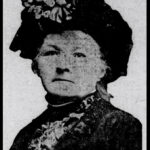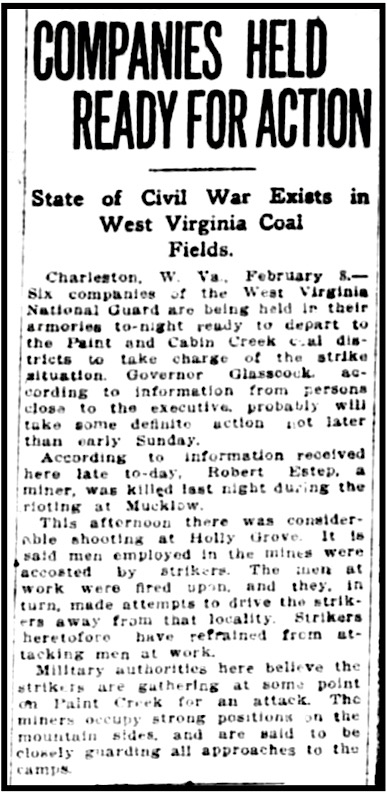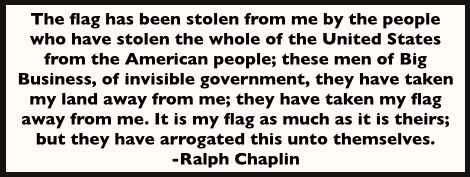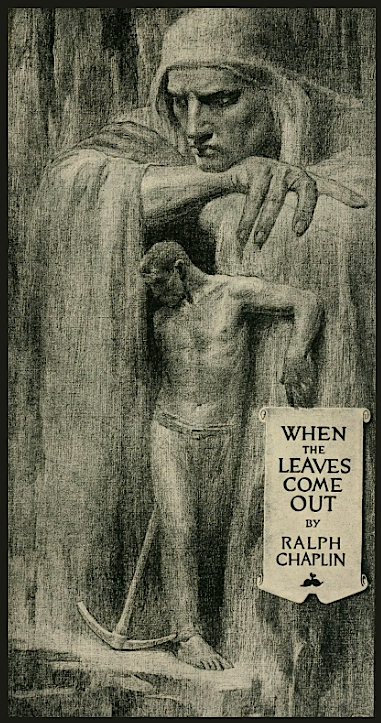 —————
—————
Hellraisers Journal – Wednesday May 7, 1913
John W. Brown on West Virginia Despotism: Mother Jones and Organizers Arrested
From The Coming Nation of May 3, 1913:
[Part II of III]
When Governor Glasscock issued his first declaration of Martial law, he seized everything in the shape of guns that could be found in the “War Zone.” After the embargo was raised he returned to the operators and Baldwin guards their gattling guns, high-power rifles and pistols, but not so with the miners guns. Consequently when these midnight assassins made their murderous attack on the sleeping village [of Holly Grove] the miners were practically unarmed.
Saturday afternoon and Sunday [February 8th and 9th, following the attack upon Holly Grove] was devoted to the mobilizing of sufficient guns and ammunition to enable the miners to put up a defence. Some of these men traveled as much as forty miles on foot simply to borrow a gun. In the meantime, all kinds of rumors were flying thick and fast. The governor sent men into the field to investigate, but the miners have long since lost confidence in these investigations. They have seen their comrades murdered before by this band of hired assassins, and then seen the governor send men out to “investigate,” and invariably the investigation resulted in turning the murderers loose to work out their hellish designs.
A well-founded rumor reached Hansford that the guards were going to make an attack on the town and had a gattling gun mounted upon the hill over-looking the main street and in a position that would enable them to rake the town from one end to the other. A small body of men went into the mountains by a round about way and overtook the guards and a pitched battle was fought in the hills from which the guards made a hasty retreat. Just why they should run off and leave a brand new $1,800 gattling gun that shoots three hundred and fifty times a minute, was not clear to the miners, but the secret came out later on when in the trial of “Mother Jones” she was accused of stealing the gun.. These fellows have such a holy horror for Mother that when they saw her coming they just quit that gun and ran. Some went by the way of the creek, but most of them took the Springfield route.
Monday the tenth was a day long to be remembered by the citizens of Hansford and the wives and children of the miners who had sought shelter in the town. During the latter part of the forenoon and up until late in the afternoon people kept streaming out of the main forks of the creek, many of whom were strangers who had been taken into the mines under false representation, and who took this first chance offered to escape the terrible conditions of peonage that now prevails throughout the whole field.
Shortly after noon, a group of men, women and children dragged themselves into Hansford. Everyone that could carry anything had a back load, and the poor women and children were ready to drop at the first friendly greeting.
Aside from what they carried on their backs they brought a new terror with them in that they reported that the guards, driven out of the hills by the miners, had mounted a gattling gun on a hand car and were going to make an attack on the town. This report was somewhat confirmed later in the day when Dr. Hunter of the “Sheltering Arms Hospital,” which is situated on an elevation on the opposite side of the Chesapeake and Ohio tracks from the town of Hansford, sent word through the town to the effect that the town would be fired upon and that the women and children should come to the hospital. There seemed to be an understanding between the hospital authorities and the coal baron’s assassins that the hospital was immune from attack, a thing not to be surprised at when it is remembered that Czar Cabel of Cabin Creek fame is treasurer of the hospital fund.
The miners and citizens of Hansford were not asking for any quarter at this time, though they did accept the hospitality for their wives and children, and by 6 p. m. all the women and children were safely out of range of the assassin’s bullets.


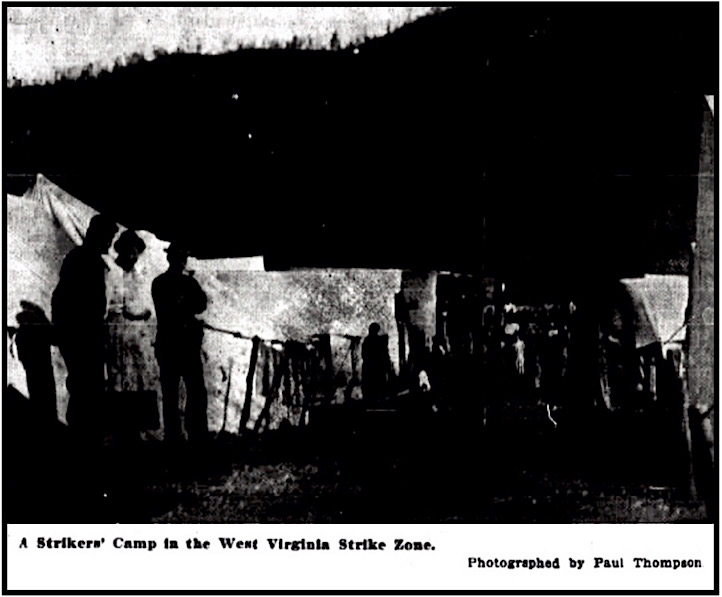
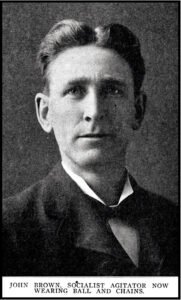
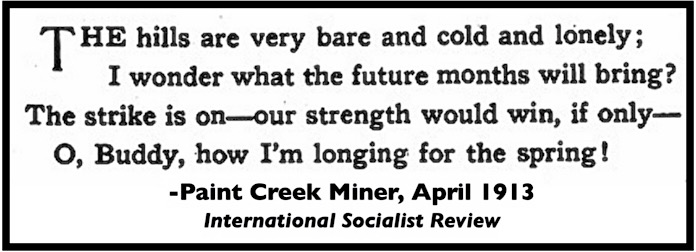 —————
—————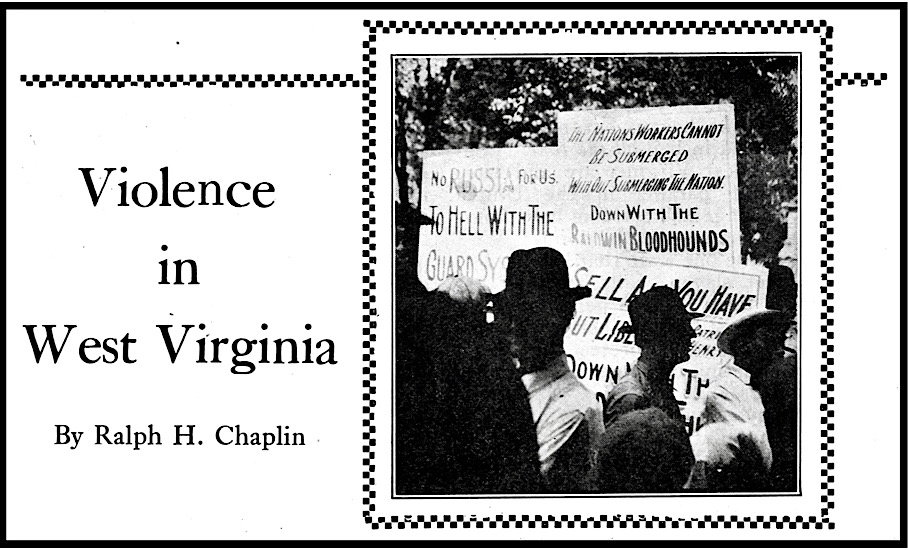
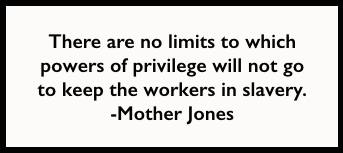 —————
—————